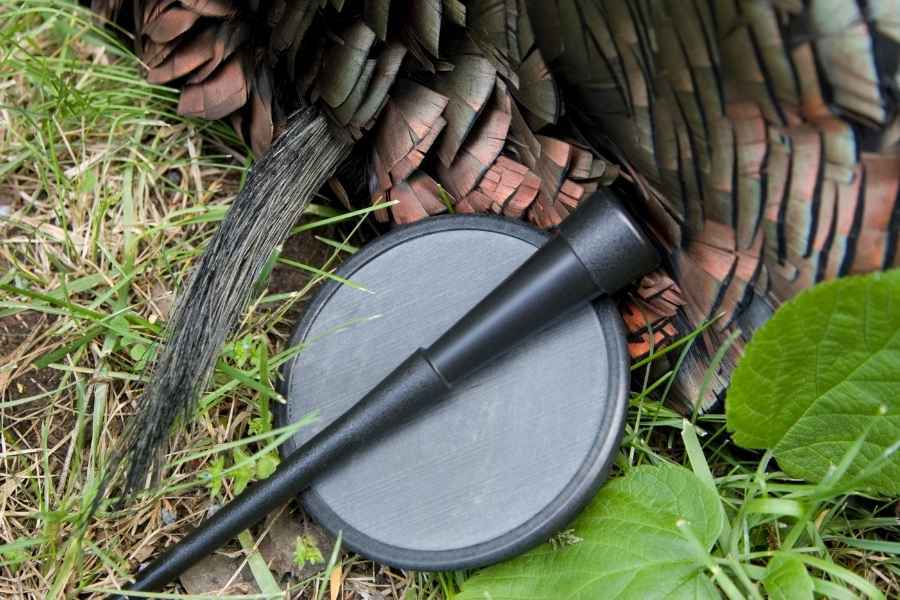You’re about to master the art of turkey calls! Whether you’re a hunter or a nature enthusiast, this guide is for you.
We’ll show you how to:
- Select the right call
- Use it effectively
- Avoid common mistakes
So, let’s dive in and get you calling those turkeys like a pro!
Understanding Turkey Call Basics
read.. best turkey calls
Before you can master the art of turkey calling, you’ve got to grasp the basics, starting with the different types of calls and their specific uses.
You see, turkey hunting isn’t just about camo gear and shotguns. It’s also about communication.
There’s the yelp, a basic call used to attract gobblers. The cluck, a shorter, sharper sound, is great for getting a tom’s attention. Purr and cutt are subtler calls that mimic a turkey’s contentment or alarm.
Each has its unique pitch, rhythm, and volume. Understanding these nuances isn’t just handy; it’s crucial. And it’s not just about buying the right tool; it’s about learning to use it effectively.
Selecting the Right Turkey Call
Choosing the right turkey call involves considering the intricacies understood from the basics, such as the turkey’s unique sounds and behaviors.
You’ve got to factor in your hunting environment, your skill level, and the type of turkey you’re targeting. Don’t rush this process. It’s essential to your success.
Here are a few tips to guide you:
- Look for a call that mimics the variety of sounds turkeys make.
- Consider the ease of use. Some calls require more skill than others.
- Think about the durability of the call. You want something that’ll withstand the elements.
- Consider the volume. Some situations require soft calls, and others, loud ones.
- Lastly, don’t forget your budget. There’s a wide range of prices.
Techniques for Effective Usage
Once you’ve got your hands on the perfect turkey call, it’s crucial to understand the techniques for practical usage to lure in your target successfully.
Each type of call requires a unique technique, so practice is key.
| Type of Call | Technique | Practice Time |
|---|---|---|
| Box Call | Sliding the paddle over the box’s edge | 30 minutes |
| Pot Call | Striking the surface in a circular motion | 40 minutes |
| Mouth Call | Using your tongue and blowing air | 50 minutes |
Common Mistakes to Avoid
While gaining proficiency with turkey calling techniques, it’s equally important to be aware of common mistakes that could hinder your progress.
- Overcalling: Too many calls can scare away turkeys. Use calls sparingly for best results.
- Incorrect volume: Turkeys have excellent hearing. Softly calling is often more effective than loud calling.
- Lack of variety: Turkeys use a wide variety of sounds. Try to mimic this in your calling.
- Ignoring the situation: Consider the time of day, weather, and turkey behavior before choosing your call.
- Not practicing: Practice makes perfect. Be sure to rehearse your calls before hunting season.
Avoiding these common pitfalls will help you master turkey calling in no time.
Advanced Turkey Call Strategies
Now that you’ve got the basics down let’s dive into some advanced turkey call strategies to up your game.
The first thing you need to master is the ‘kee-kee run’, a call usually used by young turkeys when they’re lost.
This can lure in both mature and young birds, increasing your chances.
Secondly, try the ‘fly down cackle’, which is a hen’s way of signaling she’s left the roost. It’s most effective early morning, just before dawn.
Lastly, don’t underestimate the power of silence. Sometimes, less is more. Overcalling can spook turkeys. A well-timed pause can pique their curiosity and draw them in.
Before you go…
Mastering turkey calls isn’t just about buying the right tool—it’s also about your technique and strategies. Be consistent, avoid common mistakes, and always strive to improve.
Remember, practice makes perfect. The more you use your turkey call, the better you’ll get.
Happy Hunting!






